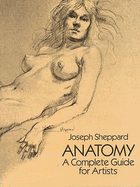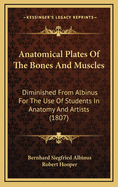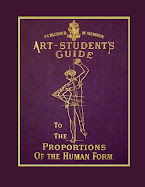PLATE IIIGoogle books versions, you have to look at both of them to see all the plates.
The measures of Gibson's triangle are given on the staff of the central figure. They refer only to length.
The horizontal lines marked V are those supplied by Vitruvius; they show how much the figure has lost in height, by putting the whole weight of the body on one leg, or standing at ease.
The horizontal line marked G is that given by Gibson; it should be found to coincide with the dots.
The line at the left represents four cubits, one of which is divided into palms and digits.
The line on the right is divided into heads, parts and minutes.
N.B.—The leg on which a person stands is always some little less in width than that which bears no weight, owing to the contraction of the muscles for sustaining the limb in position for bearing the weight of the body; so is the measure from the pit of the neck to the shoulder, some little less on that side of the body. This will be seen by the tables.
PLATE IV.
Plate IV. shows the normal proportions of the female figure, and the measures correspond with those of Plate III.
The proportions of the human figure By Marcus Vitruvius Pollio, Joseph Bonomi
The proportions of the human figure By Joseph Bonomi
Here is a reference to the book in Human Proportions for Artists By Avard T. Fairbanks, Eugene F. Fairbanks.
Another mention of the book is found in Sculpture, Egyptian--Assyrian--Greek--Roman: With numerous illustrations, a map of ancient Greece and a chronological list of ancient sculptors and their works By George Redford



The Proportions Of The Human Figure, As Handed Down To Us By Vitruvius: From The Writings Of The Famous Sculptors And Painters Of Antiquity (1872)
Human Proportions for Artists
Leonardo Technical Manuals- Human Anatomy Plates for Artists
A related article published in 1879 relates other methods of determining proportion: The Measure of Man.

Anatomy: A Complete Guide for Artists

Anatomical Plates of the Bones and Muscles: Diminished from Albinus for the Use of Students in Anatomy and Artists (1807)

Anatomy Drawing School


















No comments:
Post a Comment